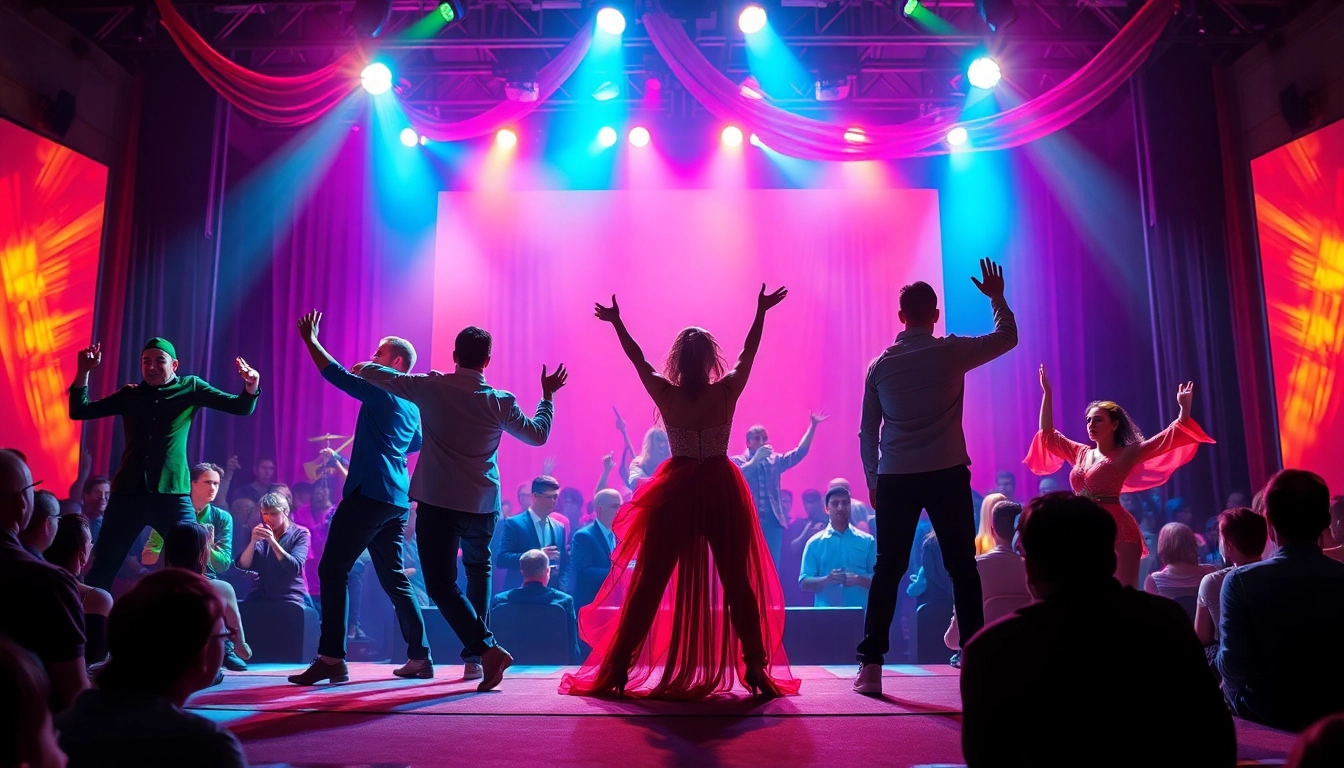Understanding Art Entertainment
What is Art Entertainment?
Art entertainment represents a dynamic intersection between artistic expression and engaging performance. It encompasses a variety of mediums where artists seek to entertain audiences while also eliciting emotional responses, sparking conversations, and promoting cultural dialogue. This multifaceted concept includes everything from theatrical performances, dance, and music to festivals and visual art exhibits. Artists and entertainers engage with their audiences in ways that are often immersive, taking them on journeys that are not only visually stimulating but also intellectually and emotionally enriching. In a world increasingly adorned with digital experiences, the demand for art entertainment continues to grow, as people seek authentic connections and the joy of shared cultural experiences.
Key Components of Art Entertainment
At its core, art entertainment comprises several key components that contribute to its efficacy and impact:
- Artistic Expression: The foundation of any art entertainment experience lies in the artistic expression of the performers or creators. This could range from a theatrical monologue to a sculptural installation.
- Engagement: Engaging audiences is vital. This can be achieved through interactive performances, thought-provoking themes, or audience participation, which generate a feeling of shared experience.
- Cultural Relevance: Art entertainment often reflects societal values, challenges, and narratives, making it relevant to the communities it serves. Such relevance reinforces the importance of destruction and reconstruction within society.
- Accessibility: Providing access to diverse forms of art entertainment for various demographics ensures that art remains inclusive and beneficial for everyone.
- Innovation: As culture and technology evolve, so does art entertainment. Employing innovative techniques, including multimedia elements, technology integration, and modern storytelling, enhances audience experiences considerably.
Importance in Cultural Events
Cultural events serve as platforms for showcasing art entertainment and represent a confluence of diverse artistic expressions. They foster community, facilitate cultural exchange, and promote education. Through festivals and exhibitions, audiences are invited to experience local and global art, stimulating interest and appreciation for various artistic endeavors. Moreover, they play a crucial role in supporting local economies, providing numerous opportunities for artists, vendors, and cultural organizations. Celebrated cultural events often draw international attention, highlighting the uniqueness and richness of a region’s artistic contributions.
Popular Forms of Art Entertainment
Live Performances and Theatrical Arts
Live performances are among the most immersive forms of art entertainment, dating back to ancient civilizations. Theatrical arts include drama, music, and dance performances, often staged in front of live audiences. What sets live performances apart is the palpable energy that exists between the performers and viewers, creating a unique shared space that cannot be replicated. From intimate theatrical productions to grand opera performances, these events captivate and inspire individuals, enabling them to engage with stories and emotions in real-time.
Visual Arts Exhibitions
Visual arts exhibitions offer a canvas for artists to showcase their work, providing audiences with a feast for the eyes. These exhibitions range from traditional galleries featuring paintings and sculpture to modern pop-up shows and interactive installations. They create an environment where individuals can connect with art personally, reflecting on the artists’ intentions while generating an array of interpretations. Technologies like augmented reality and virtual reality are increasingly integrated into exhibitions, enriching the experience and making art more accessible to a broader audience.
Multimedia Installations and Festivals
The advent of technology paved the way for multimedia installations, where sound, video, and interactive elements coalesce, creating immersive environments for audiences to explore. These installations often serve as commentaries on society, technology, and the human experience. Festivals celebrating art, music, and performances encompass an array of these forms, turning cities into vibrant hubs of culture. They offer an opportunity to experience art in its myriad forms while creating a sense of community and shared enjoyment among attendees.
Creating Impactful Art Entertainment Experiences
Identifying Your Target Audience
Understanding the audience is crucial for creating a successful art entertainment experience. Identifying the demographics, interests, and preferences of your audience will inform the content, style, and delivery of the artistic expression. Utilizing surveys, social media analytics, and audience feedback can provide valuable insights and help tailor experiences that resonate deeply with them.
Curating Engaging Content and Performances
Content curation is an art in itself. It involves selecting themes and performances that captivate the audience, challenge their perspectives, and encourage them to engage. Curators should consider the emotional arcs of their offerings, weaving narratives that prompt thought and discussion. Collaborating with artists, performers, and creatives brings fresh perspectives and innovations to the forefront, fostering a rich environment for art entertainment.
Leveraging Technology in Art Entertainment
Technology plays an increasingly significant role in redefining how audiences experience art. From augmented reality in interactive exhibits to streaming live performances, technology can expand the reach of art entertainment beyond traditional boundaries. It also provides tools for artists to experiment and express creativity in novel and unconventional ways. By embracing technological advancements, creators can keep their offerings fresh and relevant, attracting a diverse audience.
Marketing Strategies for Art Entertainment
Building a Strong Online Presence
In today’s digital age, a robust online presence is paramount for any art entertainment endeavor. Websites, social media, and digital marketing strategies serve to engage audiences, provide them with essential information, and foster community. Building a user-friendly and visually appealing website is the first step, alongside regularly updating content that highlights upcoming events, artist showcases, and interactive platforms.
Utilizing Social Media Platforms
Social media platforms are invaluable for promoting art entertainment. They allow artists and organizations to create buzz around upcoming events, share previews of performances, and engage directly with audiences. Leveraging platforms like Instagram, Facebook, and TikTok can help reach various demographics while utilizing content such as videos, images, and live streams can enhance engagement and build a loyal following.
Collaborative Marketing with Other Artists
Collaboration with other artists and organizations can amplify marketing efforts and provide additional exposure. By joining forces for joint promotions or events, artists can tap into each other’s audiences, creating mutually beneficial scenarios. Collaborations not only foster community among artists but also enrich the experiences offered to audiences, presenting diverse forms of art entertainment that appeal to a broader range of interests.
Measuring Success in Art Entertainment
Defining Key Performance Indicators (KPIs)
Establishing clear KPIs is essential in evaluating the success of any art entertainment initiative. Metrics may include audience attendance, ticket sales, engagement rates on social media, and participant feedback. By defining specific goals, artists and organizations can track their progress and make informed decisions to improve future offerings.
Gathering Audience Feedback
Audience feedback is invaluable in shaping future art entertainment experiences. Methods may include post-event surveys, interviews, or interactive feedback stations during events. This feedback helps identify what resonated with the audience, areas for improvement, and new ideas that can be integrated into future initiatives.
Analyzing Engagement Metrics
Analyzing engagement metrics such as website traffic, social media interactions, and demographic data provides insight into the effectiveness of marketing strategies and audience reach. By assessing these metrics regularly, art entertainment providers can refine their approaches, ensuring they remain relevant and engaging to their audiences.

